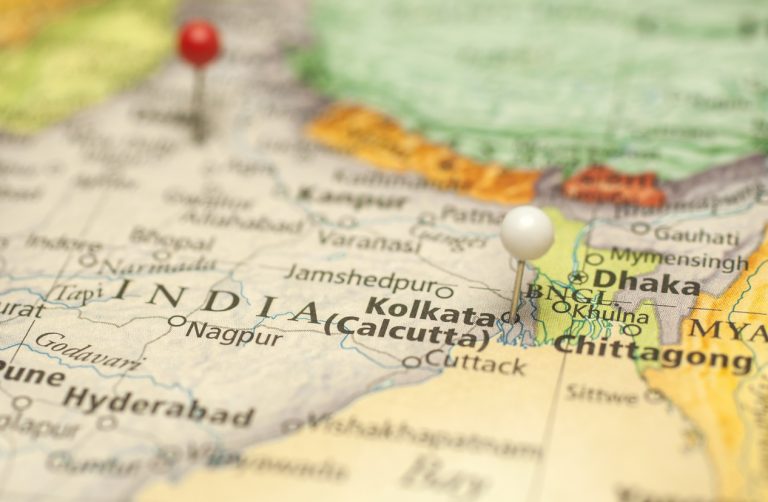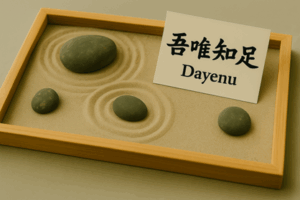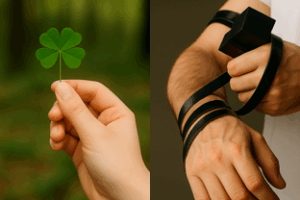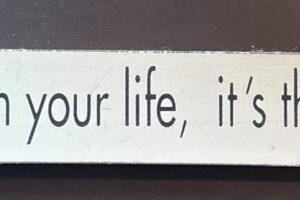I would like to thank Jo Cohen from the Jewish community in Calcutta who provided information on the Calcutta Jews to Breaking Matzo.
Traders from the Middle East: The Jewish Community in Calcutta
Good evening, ladies and gentlemen, and welcome – or as the Jewish greeting goes, Shalom ve Baruch Haba, which translates into Peace, and Blessed is he who comes.
When I was asked to speak about my community in Calcutta, it struck me that it might be as well to offer some introduction to the Jewish people and our history. Many people have only the vaguest idea of our origins, and commonly confuse us with the Armenians or the Parsis; some assume that we are a sort of Christian sect.
The Jewish calendar goes back more than 5,000 years; this is the year 5767 for us. Our New Year falls in September, and as we follow a lunar calendar the dates of our various festivals keep changing in terms of the Gregorian calendar that most of the world follows.
Year 1 of the Jewish calendar, then, begins with Adam and Eve in the Garden of Eden in 3760 BCE, their temptation by the serpent to eat the fruit of the forbidden tree, and their subsequent expulsion from Eden. The story of Noah’s Ark and the great flood that covered the earth is dated to 2150 BCE; this is a story which, with regional variations, appears in very many early records. Scientists and researchers have confirmed that there have, in fact, been more than one cataclysmic flood in the history of our planet.
The Patriarch Abraham was born in Ur, in Mesopotamia – modern Iraq – in 1812 BCE. He wandered from there to the area of present-day Israel, eventually settling at Beer-Sheba, a city which today is the headquarters of the Negev region, with his family, flocks and servants. According to both Jewish and Muslim tradition, his older son Ishmael, the son of his wife’s maidservant Hagar, founded the nomadic Arab tribes of the desert. His younger son Isaac is considered a patriarch and ancestor by the Jews. Since Isaac and Ishmael were half-brothers, that makes Muslims and Jews cousins, and indeed for most of our history we have had cordial relations with the Muslim nations.
Egypt at that time was ruled by the Pharaohs, and Isaac’s grandson Joseph was sold into slavery there around 1544 BCE; some of you may be familiar with the story of his gift of interpreting dreams, which brought him to Pharaoh’s attention and earned him a position of prominence in the land. Joseph called his family to Egypt, and the Jews prospered there for the next 100 years.
All good things come to an end, however, and eventually a Pharaoh came to the throne of Egypt who saw the Jews as a convenient source of cheap labour for the building of the Pyramids. The Jews became slaves, and remained slaves for decades, until Moses arrived on the scene and – as you may remember from the movie “The Ten Commandments” – led his people out of Egypt, across the Red Sea and into the Sinai desert in 1312 BCE. This first Exodus is commemorated by us in the festival of Passover, which was early this month.
After wandering for 40 years in the desert, the 12 tribes of the Jewish people crossed the Jordan river into the Promised Land and proceeded to settle there, each tribe on its own lands. The great poet King David ruled about 400 years later, and proclaimed the city of Jerusalem as the capital of the Kingdom of Israel. He was followed by King Solomon, who built the first Jewish Temple in Jerusalem. Incidentally, King Solomon – who had a large number of wives – is credited with having had a son with Bilkis, Queen of Sheba, who went on to establish a Jewish kingdom in Ethiopia. He was the patriarch of the Falasha Jews of Ethiopia, many of whom have emigrated to Israel.
It is at this time that the records mention the first Jews in India, who are believed to have settled on the Malabar coast around the middle of the 9th century BCE – that is some 2,800 years ago.
After the death of King Solomon Israel split into two Kingdoms, Israel and Judah, ruled by rival kings for more than 200 years, until the Assyrians conquered the northern kingdom and carried off most of the population. These are the Lost Tribes of Israel, and some of them are believed to have fled to India and settled on the Konkan coast and in Kerala.
In 422 BCE the Babylonians invaded Israel, destroyed the Temple built by King Solomon and took the population into exile, which gave us the beautiful song, “By the Rivers of Babylon”. In the 150 years that they spent in Babylon, the Jewish exiles were not treated badly; they were largely governed by their own officials, and some of them prospered. The Persians under Cyrus the Great conquered Babylon in 370 BCE, and Cyrus not only allowed the Jews to return to Israel, he gave them generous assistance to rebuild the Temple. However, a number of Jews who were prospering in Babylon and did not relish the idea of the long trek back to Israel, remained there. Amongst them were a number of eminent scholars, and so Babylon became known throughout the Diaspora as a centre of Jewish learning and theology.
50-odd years later, the Greeks conquered Israel. Jewish refugees were ship-wrecked on the Konkan coast, they were received kindly by the local villagers, settled there and became the ancestors of the Jews who still live in and around Mumbai, Pune and Ahmedabad. Having intermarried with the local people and adopted some of their customs, they have surnames like Bedekar, Wadekar and so on, the older women wear saris, and they are known as the Bene Israel. Many of them have emigrated to Israel.
After some 250 years the Romans invaded Israel, and it was therefore in Roman-occupied Israel that Jesus Christ was born 60 years or so later, marking the beginning of the Christian Era. In 67 CE the Jews revolted against the might of Rome, and after three years of bitter fighting the Temple was destroyed again. A fresh wave of Jewish refugees sailed to Cranganore in the south of India, and were welcomed and granted land by the ruler.
In 312 CE the Roman Empire collapsed and the Byzantine Empire took its place. For reasons which were largely political, the Christian church – which came to be known as the Holy Roman Church – glossed over the fact that it was the Romans who had crucified the founder of their religion, and instead found a convenient scapegoat in the Jews. This demonisation of the Jews was to result in their ill-treatment throughout Christian Europe; they were not allowed to take up most occupations, could not own land, and in most towns were restricted to living in a designated Jewish area.
A little more than 300 years later came the Islamic conquest of the Middle East. The Crusades began in 1096 CE, marked by successive waves of Christian armies whose avowed intention was to bring the Holy Land back under Christian rule. These armies did not distinguish between Muslim and Jew, slaughtering indiscriminately anyone who came in their way.
The Spanish Inquisition began in Spain in 1478 CE, and 14 years later the Jews were expelled from Spain. Many settled in Muslim countries around the Mediter-ranean, and came to be known as Sephardic or Spanish Jews, to distinguish them from the Ashkenazi or German Jews who lived in Germany, Poland, Russia and the Baltic countries.
In 1524 CE the Jews who had settled in Cranganore began to face difficulties, and moved to Cochin.
In 1648 CE the Jews living in Europe began to face even more severe problems; a large number were killed, and within the next five years or so Jews began to emigrate to America.
Other refugees from Israel at different times found their way to the North-East, to Mizoram and Manipur, where they are known as the Bnei Menashe. Many of the Bnei Menashe have emigrated to Israel, but due to their long isolation their religious observances differ from those of the Jewish mainstream, so they are required to undergo a process of study and conversion. Another small group, the Bene Ephraim, are Telugu speaking and live near Guntur in AP.
In the 1780s Jewish traders from Baghdad, Iran and Syria began to settle on the West Coast. They discovered the Bene Israel, many of whom had become oil pressers and were known as Shaniwar telis, and began to bring them back into the Jewish mainstream, aided by some Jews from Cochin. Jewish communities eventually established themselves in Mumbai, Pune, Ahmedabad and Karachi.
The Jewish community in Calcutta, never very numerous – at its peak just after World War II it was estimated at some 5,000, though there are now only about 30-35 of us – has nevertheless played a not inconsiderable part in the life of the city. The rich heritage of the Jews has undoubtedly become an integral part of the cultural history of Calcutta, as well as of the nation.
Jewish entrepreneurs contributed to the development of trade and commerce, a Jew was once Sheriff of Calcutta and several others were noted magistrates, lawyers, doctors, Army officers etc. Synagogue Street, Ezra Street and Belilious Road are all reminders of a thriving community. We are proud to acknowledge that Jewish achievements owe a great deal to the fact that there has never been any antisemitism in India.
Jewish dishes – main meals, bread, pastries and sweets, and the unforgettable Jewish cheese – have been enjoyed by many Calcuttans who have had Jewish friends, who visited the Judean Club in Madge Lane during its heyday, or who are customers of the only remaining Jewish confectioners, Nahoum’s in the New Market.
The first Jew to settle in Calcutta arrived on 1st August 1798, 108 years after Job Charnock landed here. He was from Aleppo in Syria, and his full name was Shalom ben Aaron ben Obadiah Ha-Cohen, which was usually shortened to Shalom Cohen. Other Jews had visited Calcutta for trade in earlier years, but Shalom Cohen was the first to establish residence here, and with his family and retainers, he formed the nucleus of a settlement which grew into a thriving community. Aleppo, incidentally, was renowned for the intelligence, culture, learning and business acumen of its citizens of all faiths – Muslims, Christians and Jews.
In order to comply with the Jewish dietary laws, a prosperous trader did not travel alone : he was accompanied by a shohet or ritual slaughterer of animals, a cook to prepare his meals correctly, and at least one personal servant. Often scribes and teachers of Jewish law also formed part of this entourage, for the Jews were careful not to lose touch with their religion and to observe all its rules no matter where they travelled.
When Shalom Cohen left Aleppo in 1792 he travelled first to Surat, where he took a partner, Jacob ben Semah ben Nissim (Jacob Semah), and established trading operations which flourished. When Shalom’s first wife, Seti, refused to join him in India, he married Jacob’s sister Najima, later known as Seemah. Seti eventually did come to India in 1795; she gave birth to a daughter the following year, and died shortly after. Her daughter was brought up by Seemah with her own children – five daughters and four sons.
There had been Jewish traders in the Indian Ocean and the China Sea for centuries; they had connections with powerful Parsi and Armenian commercial groups. It is speculated that Stephen al Goorji (i.e. the Georgian), Shalom’s landlord in Surat, drew his attention to the flourishing and prosperous Armenian colony in Calcutta. Encouraged by this, Shalom travelled from Surat via Bombay, Cochin and Madras, which already had Jewish settlements.
Shalom Cohen arrived in Calcutta with an introduction from his Armenian landlord in Surat to his relative in Sutanuti. He first rented a house in Canning Street known as Aloo Godam, which no longer exists. Soon after his arrival he brought his second wife and children to Calcutta, and rented a spacious garden house in Canning Street.
Shalom Cohen’s export business in Murshidabad silk, Dacca muslin, pepper and spices, indigo, saltpetre, precious stones, gold and silver, rice and coffee was a roaring success. While he travelled about the country to seek further trading opportunities, his business in Calcutta flourished under the care of his relatives. Relatives were usually taken into the business to ensure honesty and loyalty. He also employed a number of Jews from Cochin.
For some time Shalom Cohen was Court Jeweller to Maharaja Ranjit Singh, the Lion of Punjab, and to the Vizier Ghazi-ud-din Haider of Oudh. One day Maharaja Ranjit Singh asked him to value the Kohinoor diamond. Shalom Cohen examined the gem and handed it back, shaking his head. “It has no value,” he said, to the Maharaja’s amazement and anger. He went on to explain that such a gem could either be given away as a gift, or taken from its owner by force; it could not be sold, therefore it was invaluable ! It is recorded that he had an audience with the Governor-General of India, Lord William Bentinck, at Government House in Calcutta in 1830.
On 23rd February 1836 Shalom Cohen died at the age of 73, and was buried in the Jewish cemetery in Narkeldanga. This cemetery was established on land donated by a friend of Shalom Cohen’s in 1812, when a visitor from Palestine died in Calcutta and the community had no place to bury him. Shalom Cohen went to his friend, a princely Muslim landowner, and told him of the difficulty. His friend immediately offered him a piece of land in Narkeldanga. Unwilling to take it absolutely free, Shalom Cohen pulled a ruby ring off his finger and insisted that the prince accept it in exchange. The original land was added to several times as the community grew. The Oseh Haised or Jewish Burial Board (literally, Workers of Kindness) takes care of all burial arrangements.
In the late 18th and early 19th century a number of Jews from towns in Syria, Iraq and Iran – Aleppo, Baghdad, Basra, Isfahan – came to India for trade, and many of them settled in Calcutta : we find the names of Cohen, Duek Cohen, Lanyado, Ezra, Arakie, Gubbay and several others in the early records of the community. They were known as Baghdadi Jews and constituted the bulk of the Jewish population in Calcutta. In the 1820’s the misrule of Daud Pasha in Baghdad further fuelled Jewish emigration, and a number of poorer families joined the community at this time. They settled in the original Jewish quarter of the city, bounded by Old China Bazar Street, Sukeas Lane, Lower Chitpore Road and Canning Street.
After the death of Shalom Cohen, his son-in-law Moses Simon Duek Cohen, who came to Calcutta in 1805 at the age of 19, became the head of the community. The large family, connected by marriage to several other great trading families, continued to prosper. By this time Jewish traders had established themselves in several mofussil towns like Monghyr, Dinapore, Bhagalpur, Gorakhpur and Rajshahi. Rangoon, Penang, Singapore, Hong Kong and Shanghai, which were important trading hubs in the network that spanned the entire Orient, also had their quota of Jewish entrepreneurs, some of whom rose to great eminence.
Moses Simon Duek Cohen (1786-1861) was the first President of Calcutta’s Jewish community as well as the Chazan (leader of religious services) and Mohel (performer of ritual circumcision). His grandson, Elias Moses Duek Cohen, was also Chazan at Neveh Shalom Synagogue from 1873 and at Magen David Synagogue from 1883-84 to 1927.
Prayer is central to Jewish life, and in the beginning the Jews of Calcutta held their prayer meetings at the house of Shalom Cohen. A second prayer hall was located at a rented house in Amratola, which later moved to a house known as “Khan Hajji Masuda” on Ezra Street. In 1825 a large house at 5, Suktikhatta, was purchased for a sum of Rs.16,000/- and consecrated as a Synagogue, “Neveh Shalom”. This building was later dismantled to make room for the construction of Magen David Synagogue; Neveh Shalom was rebuilt on an adjacent plot of land in 1911, but is not presently used for services.
Calcutta’s two main Synagogues are the beautiful “Beth-El” on Pollock Street, built in 1856, and “Magen David” off Brabourne Road, built in 1883-84 and acknowledged to be the largest and most magnificent Synagogue in the East. Both have been granted Heritage Building status, which means that while ownership of the synagogues remains with the Jewish community, the Government, through the Archaeological Society of India, is now responsible for maintenance and security of both Synagogues. On the major festivals we hold prayers in each Synagogue alternately, in order to keep them both open and in use.
Other prayer halls were Maghen Aboth on Blackburn Lane, and Shaare Rasone on Sudder Street. These were established to cater to the community’s needs as it grew and prospered, with Jews moving away from the Canning Street area to Bow Bazar, the New Market area and Park Street/ Chowringhee.
The Calcutta Synagogues follow Eastern Jewish practices rather than European conventions. The Torah Scrolls (containing the Five Books of Moses) are encased in wooden caskets covered with beaten silver worked in beautiful designs. The Tebah (pulpit for leading the congregation in prayer) is located in the center of the hall. The congregation faces the Ark in a Westerly direction, towards Jerusalem. The doors to the Ark, which houses the Torah Scrolls, are covered by heavy velvet curtains or parokhets, embroidered with gold thread.
In all three Synagogues, the seating arrangements for men and women were separate. Jewish ladies were seated in the upper balcony of the Synagogue, while the men occupied the ground floor. With the diminution of the community this separation is no longer observed, and women sit on the ground floor but on different benches from the men.
The Baghdadi Jews in Calcutta did not become assimilated into the indigenous population. While Hebrew was reserved for prayer and the study of the Torah, Arabic, their mother tongue, began to be replaced by English in the second half of the 19th century. At the same time they also began to discard their Arabian style of dress in favour of European clothing. First names and later family names, which were originally Hebrew, were anglicised. Jews did not take Indian names and rarely adopted Indian styles of dress, though all of them spoke Hindi. Their constant endeavour was to be recognised as European by the British. This, however, did not happen.
As the community grew and prospered in the second half of the 19th century, it became increasingly conscious of the need for its own schools. The Jewish Girls’ School, intended for girls and little boys, was established in January 1881 on Ezra Street by Moses de Jacob Abeasis, an immigrant from Tunis and Malta. The object of the school was to inculcate “a thorough knowledge of Hebrew religious principles together with a plain English education”. On the first day there were 18 pupils, but in little over a year the number rose to 108. Children from poor families were educated free of charge and provided with books, stationery and lunch.
In 1884 the school moved to more spacious premises on Pollock Street, and by 1929 it was able to construct its own building opposite Beth-El Synagogue, which is now rented to the Post Office. The Jewish Girls’ School was classified as European in 1894. In 1937 the Jewish Women’s League set up a Jewish Girls’ Hostel, which eventually became the boarding department of the Jewish Girls’ School. The school moved to its present home at 65, Park Street in 1955-56. Miss Duffin was the first Headmistress of the school, and the last Jewish Principal was Miss Ramah Luddy, who held that responsibility for nearly 30 years until 1963. The Girls’ School now has about 800 students and produces excellent results every year.
Eminent alumni of the Jewish Girls’ School included Matilda Cohen, the first Jewish girl to receive a Master’s Degree from Calcutta University; Rachel Cohen, a doctor who became Superintendent of the Lady Dufferin Hospital, and many others.
In November 1882 Elia Ezra, son of David Joseph Ezra, started the “Tehilla-le-David”, later known as the “Ezras’ Benevolent Institution”, to provide education to the sons of poor parents. Hebrew and the Torah, translated into Arabic, were taught in the school along with secular subjects.
After the death of Elia Ezra the community took up the responsibility of this school, which later came to be known as the “Talmud Torah Institution”. In May 1909 the school moved to rented premises at 45, Bowbazar Street. A generous donation by Elias Meyer, the President of the school, helped it to build its present premises in 1925. It is now called the “Elias Meyer Free School and Talmud Torah”. A few years ago a branch of the school was set up in North Calcutta, on Federation Street, to serve children in that part of the city; it has classes up to VI at present.
The birth of Israel after World War II brought about a change in the exclusive Jewish character of both the Jewish Boys’ and Girls’ Schools. Mass emigration considerably reduced the number of Jewish pupils, and the school authorities decided to admit non-Jewish students. At present there is not a single Jewish student or Jewish staff in either the Girls’ or Boys’ School. Both schools have been upgraded to the Higher Secondary level in recent times and they provide a good English-medium education to the children of Calcutta, irrespective of caste or creed.
In July 1887, Mozelle Ezra, widow of Elia Ezra, established the Ezra Hospital within the compound of the Medical College, Calcutta, for poor Jews who needed hospitalisation. The hospital was opened on 1st March 1888. It has two floors, the upper floor meant for women and children and the lower floor for men. The exterior of the building is Italianate in style and was designed to resemble the Maghen David Synagogue by Mackintosh Burn & Company. The Ezra Hospital, originally meant for Jewish poor, is now part and parcel of the Medical College.
Calcutta Jewry played a significant role in the economic development of Bengal. The majority of the early Jewish settlers were traders by profession, and the strategic and geographic position of Calcutta offered them new avenues of trade in Murshidabad silk, Dacca muslin, pepper and spices, opium, indigo, saltpetre, precious stones, gold and silver, rice and coffee. Many Jews amassed considerable wealth and enjoyed a high social status.
In the early 20th century Jews became well established in the booming real estate business in Calcutta. The names of Ezra, Cohen, Mordecai, Elias, Gubbay and others were well known in commercial circles. Elia Ezra was a Magistrate of the City Civil Court, and was Sheriff of Calcutta in 1879. The first woman to practice law in the Calcutta High Court was a Jewess, Mrs. Rachel Ashkenazi, who represented the interests of purdanashin women.
No Jews in the recent history of Calcutta commanded such respect as Sir David Ezra and Benjamin Nissim Elias. Sir David Ezra was a Director of several companies, besides being proprietor of the vast Ezra estates. The Ezras owned some of the most imposing buildings in Calcutta: Chowringhee Mansion, Esplanade Mansion, Ezra Mansion, Ezra Terrace etc. come to mind. Another Jewish property was the aptly named Bamboo Villa, which now houses Income-Tax offices !
Benjamin Nissim Elias, who began his life as an obscure trader, became one of Calcutta’s wealthiest and most famous businessmen. His company, B.N. Elias & Co. Ltd., was the largest Jewish company in the East. His business empire included jute and tobacco, real estate, a dairy and the supply of electricity to mofussil towns. The majority of the employees in these companies were Calcutta Jews.
Another famous son of Calcutta is Lt. General J.F.R. “Jackie” Jacob, who was largely responsible for the successful outcome of the war for the liberation of Bangladesh in 1971. He went on to become G.O.C.-in-C., Eastern Command, and was later the Governor of Goa and then of the Punjab.
Nahoum and Sons, whose ancestor Nahoum ibn Israel came to Calcutta from Baghdad in 1868, have been leading confectioners in the New Market since 1912. Their present shop was established in 1916. Nahoum’s are famous for their wedding cakes, Jewish cheese and delicacies such as cheese samosas, almond macaroons, baklava, and a wide range of bread and biscuits. The shop also functions as an unofficial meeting-place for members of the community. David Nahoum is the Registrar of the Jewish Association of Calcutta. He also plays a leading role in Synagogue services and in the administration of the Jewish Schools and various charitable Funds.
The Mordecai family owned Daw, Sen & Company, manufacturers of chutneys and condiments. Jews owned shops in Calcutta and also in the mofussil areas. The land on which the Treasure Island market complex on Madge Lane was built was owned by a Jewish entrepreneur. Regular customers of Trinca’s on Park Street still remember “Josh” Joshua with affection. Isaac Meyer and Maurice Shellim were eminent doctors in Calcutta, George Traub was known as an excellent dentist, and Ellis B. Meyer and Victor Moses were esteemed members of the legal profession. Bernard Jacob, a student of the Calcutta School of Music, was for some time the Conductor of the Calcutta Symphony Orchestra. There are many others, too many to name them all – I hope those whom I have omitted will excuse me.
When the community was in its heyday, the Jews of Calcutta established a number of social and cultural clubs and associations. The need for organised social welfare and charity led to the formation of the Jewish Women’s League in 1913. Adult female members of the community were members of this League. Funds were raised by organising cultural programmes, to give a monthly allowance to poor Jews and free tiffin to the poor children attending the Jewish schools. During Jewish religious festivals, the League distributed food and clothes among the indigent. The League is still in existence, and Miss Ramah Musleah, the grand old lady of the community, used to be its secretary. Miss Musleah, who died last year at the age of 98, was also a teacher of the Jewish Girls’ School for nearly 50 years.
The Jewish Association of Calcutta was formed in 1921 to promote social welfare and upliftment within the community. All male members of the Jewish community above the age of 18 years were eligible for membership. The Association still exists today, with David Nahoum as its Registrar.
The Habonim Club was started in 1930 on the ground floor of 3, Madge Lane, a house belonging to Harry Morris, with the objective of inculcating a spirit of nationalism and to encourage local youth to migrate to Palestine. Several members of Habonim did emigrate to Palestine, where they joined other Jewish immigrants in building the foundations of what is now the State of Israel.
The Judean Club was established in May 1929, with Lady Ezra as its first President, at premises on Kyd Street. It later shifted to Madge Lane. Its aim was to provide a social and cultural centre for young Jews, and it organised lectures, picnics, parties, dances etc. The Club was originally meant exclusively for Jews, but in the 1960’s non-Jewish members were admitted. The Judean Club closed in 1970, and the Treasure Island market now stands where it used to be.
The Maccabi Club (established in April 1951) and other similar groups were set up to promote sports and culture amongst the youth of the community. Badminton, table tennis, physical training, boxing, hockey and basketball were promoted by these Clubs, and inter-Club matches were held. They also organised debates, lectures, picnics, youth camps, and essay and elocution competitions.
Many Jewish girls and boys went to school in Darjeeling and Kurseong, and well-to-do Jewish families used to travel to Darjeeling for summer holidays. A few even owned houses in Darjeeling. Madhupur was another famous holiday destination; whole families used to move there for a month or more during school holidays, to enjoy the wide open spaces, picnics in the ravine, and freedom from the more circumscribed life of the city. A few also holidayed at Gopalpur, but this seaside resort was never as popular as Madhupur and Darjeeling.
The establishment of the State of Israel in 1948 caused a large number of Jews to emigrate to their Biblical homeland. Many gave up good jobs in Calcutta to go and help build the new State. Some also went to England, America, Australia and Canada. For a long time there have been no Jewish marriages or births in Calcutta. The last marriage took place in December, 1982, and the last birth was more than 30 years ago.
Most of the remaining Jews in Calcutta now are on the wrong side of 60, the last remnants of once-large families, most of whom have emigrated. Several members of the community are over 80, some over 90. We are fortunate in having trust funds established by wealthy members of the community many years ago, and the interest income from those funds is used to meet the living expenses of those who lack money of their own. The Oseh Haised, which maintains the cemetery, is also tasked with the medical care of members of the community who need it. We are funded by the Schools, and arrange and pay for operations, medicines, tests, eye care, dentists, etc. In some cases we also provide nursing care at home, if the doctor feels it is necessary.
Jo Cohen
24 April 2007
(Updated 22 November 2008)






